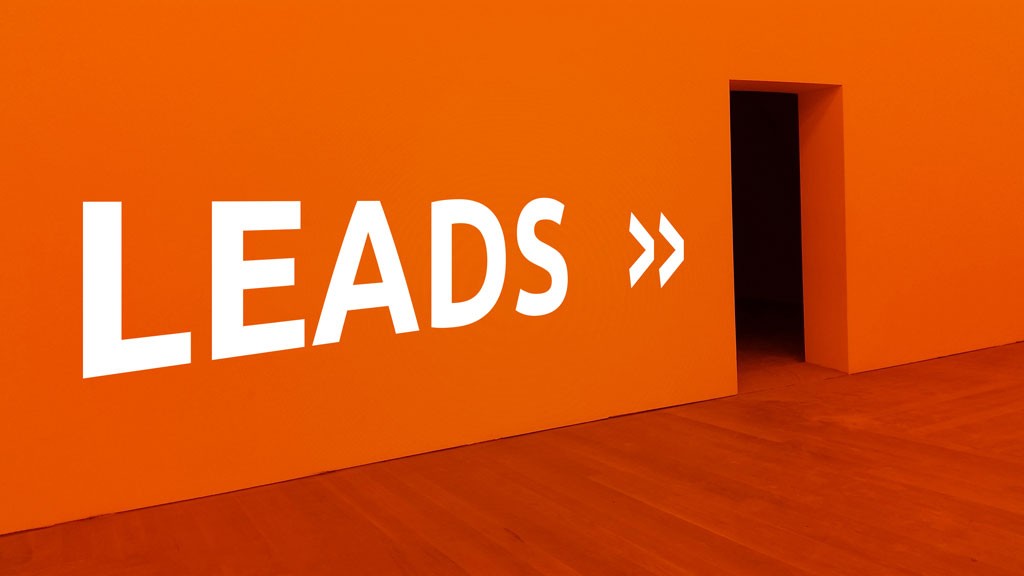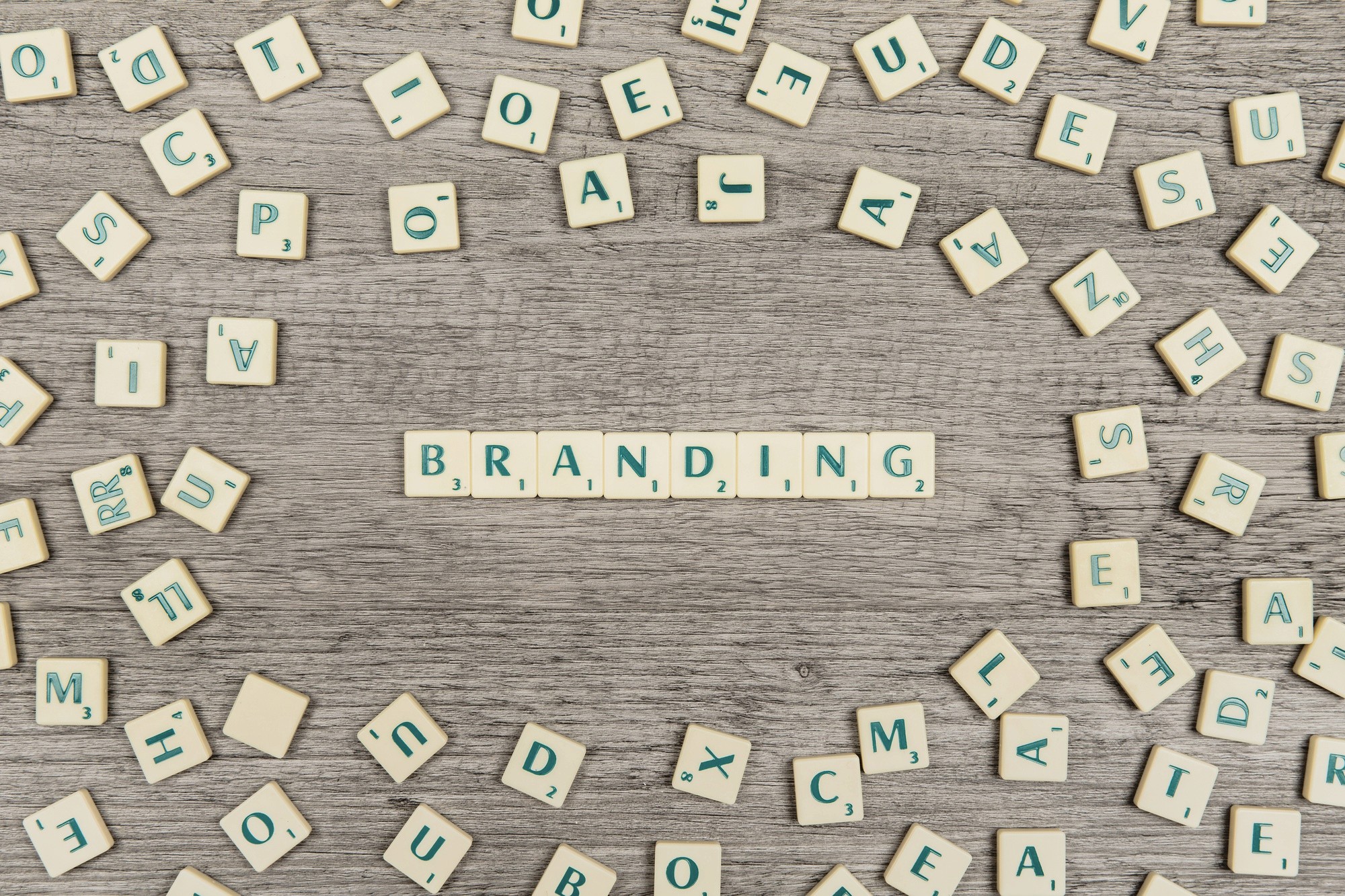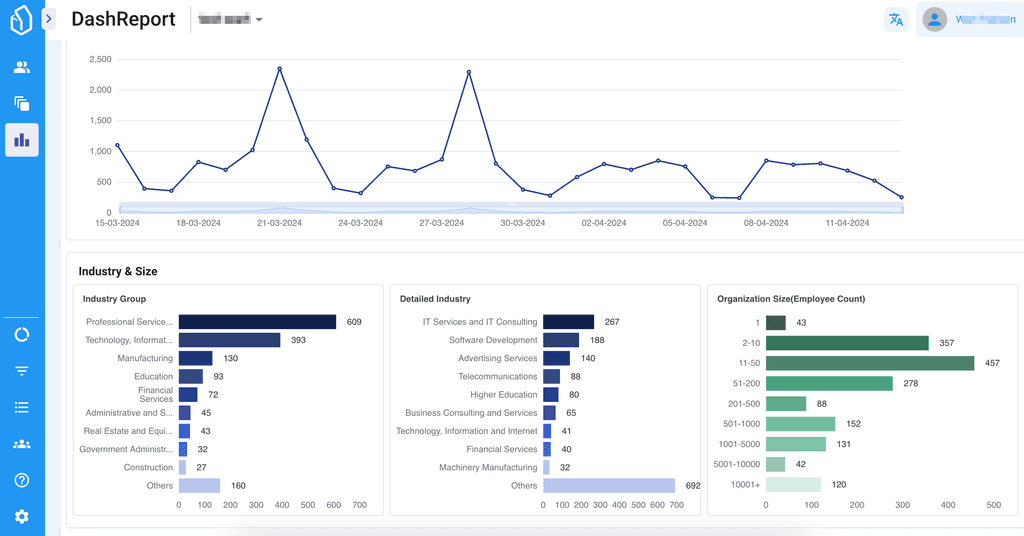
Marketing
How to Make a Brand Persona
How to Make a Brand Persona
2016-02-21

Marketing
How to Make a Brand Persona
2016-02-21

Marketing
How to Make a Brand Persona
2016-02-21
Table of Contents
Auto Generated TOC
Auto Generated TOC
Auto Generated TOC
Auto Generated TOC
Every brand needs a personality. Do you know why it’s important for a brand to have a personality? If you don’t know (or would like to refine) your brand persona, we have listed out the steps that you should take to form a powerful persona that compliments your mission, product, and website perfectly.
The roots of every brand, which were defined by the Big Five Personality Traits are ruggedness, sophistication, competence, sincerity, and excitement. Most brands can define themselves with one of these words, and this definition will impact how a customer perceives and interacts with a brand.Finding Your Personality
Is your brand rugged, sophisticated, competent, sincere, or excited? Take a moment to think about how you would describe your business to somebody and match what you would tell them to one of these words. When you’re able to figure out which word matches your company best, you can think about how to leverage that definition to form a marketing plan around it. The plan that you’ll form around this word will have the ultimate goal of making the customer feel an emotional attachment to your company.
To form an emotional attachment, you’ll think further about your brand and decide which typefaces, colors, and other elements match your personality best. When you pick these elements, you’ll need to decide if your brand is either traditional and established or modern and high-energy.
A traditional and established business is likely to have a formal personality. A formal personality typically uses very strong typefaces, symmetry, and bold colors.
A modern and high-energy brand will typically be a lot more playful than a traditional and established business. A more playful feel means the brand will likely use bright colors and make more hip and contemporary design choices.
Finding Your Voice
To create your brand voice, you’re going to look back on the word you’ve decided to define your brand with. However, before we delve into finding your voice, let’s quickly review what exactly your voice is. Your voice is how you talk to your customers. The way that you speak should be consistent and coherent in all of your marketing communications.
To begin finding your voice, we suggest that you make a list of words that you want your brand to use frequently. You’ll then use these words tactically throughout your communications. These words will bring your company to life and make your brand personable, which should ultimately help you form an emotional connection with current and potential customers.
In addition to figuring out how to strategically use the keywords that bring your brand to life, you should think about if you believe your brand is talking as a male or female, if it’s young or old, or should be light or serious.
Finding Your Brand Identifiers
When forming your brand persona, you can’t forget about the design elements of your brand. For most customers, your brand and website are going to be the two principal brand identifiers. However, items such as what colors you use, the typography you pick, images you use, and more will help customers identify what makes your brand unique.
The most common brand identifiers you should consider are the following:
Images. What type of images are you going to typically use? This is important to consider because the images that your brand decides to use will leave a lasting impression on your customers. And don't forget about the social media images you use too.
Typography. What type of font are you going to typically use? This is important because a font is a way for customers to understand your personality and remember you. (Imagine if every time your customers saw the font Helvetica, they thought about you!)
Color. What colors are you going to use to bring your brand to life? The colors you pick will make people associate different emotions with your brand. For example, warm colors typically make people happy, while cool colors lead to a relaxed feel.
Forming Your Style Guide
After taking the time to think about your brand personality, you should wrap up all of these notions into an easy to review and use a style guide. When you make your style guide, be sure to include the word that defines your brand, how you feel your voice should be portrayed, and what images, fonts, and other guidelines you’d like your brand to consistently adhere to.
Having a Personality Will Greatly Benefit Your Brand
It’s virtually impossible to create a great business if you don’t have a personality. This is because your brand personality makes your business memorable and identifiable. Your personality is what makes your business stand out from the competition. When you understand your personality you will surpass your competitors.
Every brand needs a personality. Do you know why it’s important for a brand to have a personality? If you don’t know (or would like to refine) your brand persona, we have listed out the steps that you should take to form a powerful persona that compliments your mission, product, and website perfectly.
The roots of every brand, which were defined by the Big Five Personality Traits are ruggedness, sophistication, competence, sincerity, and excitement. Most brands can define themselves with one of these words, and this definition will impact how a customer perceives and interacts with a brand.Finding Your Personality
Is your brand rugged, sophisticated, competent, sincere, or excited? Take a moment to think about how you would describe your business to somebody and match what you would tell them to one of these words. When you’re able to figure out which word matches your company best, you can think about how to leverage that definition to form a marketing plan around it. The plan that you’ll form around this word will have the ultimate goal of making the customer feel an emotional attachment to your company.
To form an emotional attachment, you’ll think further about your brand and decide which typefaces, colors, and other elements match your personality best. When you pick these elements, you’ll need to decide if your brand is either traditional and established or modern and high-energy.
A traditional and established business is likely to have a formal personality. A formal personality typically uses very strong typefaces, symmetry, and bold colors.
A modern and high-energy brand will typically be a lot more playful than a traditional and established business. A more playful feel means the brand will likely use bright colors and make more hip and contemporary design choices.
Finding Your Voice
To create your brand voice, you’re going to look back on the word you’ve decided to define your brand with. However, before we delve into finding your voice, let’s quickly review what exactly your voice is. Your voice is how you talk to your customers. The way that you speak should be consistent and coherent in all of your marketing communications.
To begin finding your voice, we suggest that you make a list of words that you want your brand to use frequently. You’ll then use these words tactically throughout your communications. These words will bring your company to life and make your brand personable, which should ultimately help you form an emotional connection with current and potential customers.
In addition to figuring out how to strategically use the keywords that bring your brand to life, you should think about if you believe your brand is talking as a male or female, if it’s young or old, or should be light or serious.
Finding Your Brand Identifiers
When forming your brand persona, you can’t forget about the design elements of your brand. For most customers, your brand and website are going to be the two principal brand identifiers. However, items such as what colors you use, the typography you pick, images you use, and more will help customers identify what makes your brand unique.
The most common brand identifiers you should consider are the following:
Images. What type of images are you going to typically use? This is important to consider because the images that your brand decides to use will leave a lasting impression on your customers. And don't forget about the social media images you use too.
Typography. What type of font are you going to typically use? This is important because a font is a way for customers to understand your personality and remember you. (Imagine if every time your customers saw the font Helvetica, they thought about you!)
Color. What colors are you going to use to bring your brand to life? The colors you pick will make people associate different emotions with your brand. For example, warm colors typically make people happy, while cool colors lead to a relaxed feel.
Forming Your Style Guide
After taking the time to think about your brand personality, you should wrap up all of these notions into an easy to review and use a style guide. When you make your style guide, be sure to include the word that defines your brand, how you feel your voice should be portrayed, and what images, fonts, and other guidelines you’d like your brand to consistently adhere to.
Having a Personality Will Greatly Benefit Your Brand
It’s virtually impossible to create a great business if you don’t have a personality. This is because your brand personality makes your business memorable and identifiable. Your personality is what makes your business stand out from the competition. When you understand your personality you will surpass your competitors.
Every brand needs a personality. Do you know why it’s important for a brand to have a personality? If you don’t know (or would like to refine) your brand persona, we have listed out the steps that you should take to form a powerful persona that compliments your mission, product, and website perfectly.
The roots of every brand, which were defined by the Big Five Personality Traits are ruggedness, sophistication, competence, sincerity, and excitement. Most brands can define themselves with one of these words, and this definition will impact how a customer perceives and interacts with a brand.Finding Your Personality
Is your brand rugged, sophisticated, competent, sincere, or excited? Take a moment to think about how you would describe your business to somebody and match what you would tell them to one of these words. When you’re able to figure out which word matches your company best, you can think about how to leverage that definition to form a marketing plan around it. The plan that you’ll form around this word will have the ultimate goal of making the customer feel an emotional attachment to your company.
To form an emotional attachment, you’ll think further about your brand and decide which typefaces, colors, and other elements match your personality best. When you pick these elements, you’ll need to decide if your brand is either traditional and established or modern and high-energy.
A traditional and established business is likely to have a formal personality. A formal personality typically uses very strong typefaces, symmetry, and bold colors.
A modern and high-energy brand will typically be a lot more playful than a traditional and established business. A more playful feel means the brand will likely use bright colors and make more hip and contemporary design choices.
Finding Your Voice
To create your brand voice, you’re going to look back on the word you’ve decided to define your brand with. However, before we delve into finding your voice, let’s quickly review what exactly your voice is. Your voice is how you talk to your customers. The way that you speak should be consistent and coherent in all of your marketing communications.
To begin finding your voice, we suggest that you make a list of words that you want your brand to use frequently. You’ll then use these words tactically throughout your communications. These words will bring your company to life and make your brand personable, which should ultimately help you form an emotional connection with current and potential customers.
In addition to figuring out how to strategically use the keywords that bring your brand to life, you should think about if you believe your brand is talking as a male or female, if it’s young or old, or should be light or serious.
Finding Your Brand Identifiers
When forming your brand persona, you can’t forget about the design elements of your brand. For most customers, your brand and website are going to be the two principal brand identifiers. However, items such as what colors you use, the typography you pick, images you use, and more will help customers identify what makes your brand unique.
The most common brand identifiers you should consider are the following:
Images. What type of images are you going to typically use? This is important to consider because the images that your brand decides to use will leave a lasting impression on your customers. And don't forget about the social media images you use too.
Typography. What type of font are you going to typically use? This is important because a font is a way for customers to understand your personality and remember you. (Imagine if every time your customers saw the font Helvetica, they thought about you!)
Color. What colors are you going to use to bring your brand to life? The colors you pick will make people associate different emotions with your brand. For example, warm colors typically make people happy, while cool colors lead to a relaxed feel.
Forming Your Style Guide
After taking the time to think about your brand personality, you should wrap up all of these notions into an easy to review and use a style guide. When you make your style guide, be sure to include the word that defines your brand, how you feel your voice should be portrayed, and what images, fonts, and other guidelines you’d like your brand to consistently adhere to.
Having a Personality Will Greatly Benefit Your Brand
It’s virtually impossible to create a great business if you don’t have a personality. This is because your brand personality makes your business memorable and identifiable. Your personality is what makes your business stand out from the competition. When you understand your personality you will surpass your competitors.
Every brand needs a personality. Do you know why it’s important for a brand to have a personality? If you don’t know (or would like to refine) your brand persona, we have listed out the steps that you should take to form a powerful persona that compliments your mission, product, and website perfectly.
The roots of every brand, which were defined by the Big Five Personality Traits are ruggedness, sophistication, competence, sincerity, and excitement. Most brands can define themselves with one of these words, and this definition will impact how a customer perceives and interacts with a brand.Finding Your Personality
Is your brand rugged, sophisticated, competent, sincere, or excited? Take a moment to think about how you would describe your business to somebody and match what you would tell them to one of these words. When you’re able to figure out which word matches your company best, you can think about how to leverage that definition to form a marketing plan around it. The plan that you’ll form around this word will have the ultimate goal of making the customer feel an emotional attachment to your company.
To form an emotional attachment, you’ll think further about your brand and decide which typefaces, colors, and other elements match your personality best. When you pick these elements, you’ll need to decide if your brand is either traditional and established or modern and high-energy.
A traditional and established business is likely to have a formal personality. A formal personality typically uses very strong typefaces, symmetry, and bold colors.
A modern and high-energy brand will typically be a lot more playful than a traditional and established business. A more playful feel means the brand will likely use bright colors and make more hip and contemporary design choices.
Finding Your Voice
To create your brand voice, you’re going to look back on the word you’ve decided to define your brand with. However, before we delve into finding your voice, let’s quickly review what exactly your voice is. Your voice is how you talk to your customers. The way that you speak should be consistent and coherent in all of your marketing communications.
To begin finding your voice, we suggest that you make a list of words that you want your brand to use frequently. You’ll then use these words tactically throughout your communications. These words will bring your company to life and make your brand personable, which should ultimately help you form an emotional connection with current and potential customers.
In addition to figuring out how to strategically use the keywords that bring your brand to life, you should think about if you believe your brand is talking as a male or female, if it’s young or old, or should be light or serious.
Finding Your Brand Identifiers
When forming your brand persona, you can’t forget about the design elements of your brand. For most customers, your brand and website are going to be the two principal brand identifiers. However, items such as what colors you use, the typography you pick, images you use, and more will help customers identify what makes your brand unique.
The most common brand identifiers you should consider are the following:
Images. What type of images are you going to typically use? This is important to consider because the images that your brand decides to use will leave a lasting impression on your customers. And don't forget about the social media images you use too.
Typography. What type of font are you going to typically use? This is important because a font is a way for customers to understand your personality and remember you. (Imagine if every time your customers saw the font Helvetica, they thought about you!)
Color. What colors are you going to use to bring your brand to life? The colors you pick will make people associate different emotions with your brand. For example, warm colors typically make people happy, while cool colors lead to a relaxed feel.
Forming Your Style Guide
After taking the time to think about your brand personality, you should wrap up all of these notions into an easy to review and use a style guide. When you make your style guide, be sure to include the word that defines your brand, how you feel your voice should be portrayed, and what images, fonts, and other guidelines you’d like your brand to consistently adhere to.
Having a Personality Will Greatly Benefit Your Brand
It’s virtually impossible to create a great business if you don’t have a personality. This is because your brand personality makes your business memorable and identifiable. Your personality is what makes your business stand out from the competition. When you understand your personality you will surpass your competitors.

Generate More Qualified Leads with LeadBoxer
Create a (free) account or get a demo and find out how we can help you.

Generate More Qualified Leads with LeadBoxer
Create a (free) account or get a demo and find out how we can help you.

Generate More Qualified Leads with LeadBoxer
Create a (free) account or get a demo and find out how we can help you.

Generate More Qualified Leads with LeadBoxer
Create a (free) account or get a demo and find out how we can help you.
Get Started with LeadBoxer
LeadBoxer can help you quickly generate more leads
Get more insight into your online audience and their behaviour, and turn this data into actual opportunities.
Start Now!
Get Started with LeadBoxer
LeadBoxer can help you quickly generate more leads
Get more insight into your online audience and their behaviour, and turn this data into actual opportunities.
Start Now!
Get Started with LeadBoxer
LeadBoxer can help you quickly generate more leads
Get more insight into your online audience and their behaviour, and turn this data into actual opportunities.
Start Now!
Get Started with LeadBoxer
LeadBoxer can help you quickly generate more leads
Get more insight into your online audience and their behaviour, and turn this data into actual opportunities.
Start Now!
Other content in category
Marketing



B2B Content Syndication: Why Experts Predict It Will Trend in 2025



The Importance of Targeted Sales Enablement Content and Metrics



Prioritizing Conversion Rate Optimization



The Importance of Brand Positioning and Brand Value



Growth Hacking Versus Growth Marketing: The Pros and Cons

Supercharge your marketing results with LeadBoxer!
Analyze campaigns and traffic, segement by industry, drilldown on company size and filter by location. See your Top pages, top accounts, and many other metrics.


Supercharge your marketing results with LeadBoxer!
Analyze campaigns and traffic, segement by industry, drilldown on company size and filter by location. See your Top pages, top accounts, and many other metrics.


Supercharge your marketing results with LeadBoxer!
Analyze campaigns and traffic, segement by industry, drilldown on company size and filter by location. See your Top pages, top accounts, and many other metrics.


Supercharge your marketing results with LeadBoxer!
Analyze campaigns and traffic, segement by industry, drilldown on company size and filter by location. See your Top pages, top accounts, and many other metrics.


